If you are like the vast majority of businesses, you strive to shorten your sales-cycle and accelerate closing the deal. On the other hand, some businesses are blessed with such a smooth sales process that they need to slow things down.
We’re kidding, of course, but we encounter every one of the following pitfalls when we observe selling processes. So depending on how you operate, here are either some tips for delaying the sale or things to avoid to shorten the buying process.
1. Fail to understand the customer’s underlying business need.
One of the most effective ways to delay a sale is to never establish why the customer needs your solution. If you don’t first understand their problem and how it impacts them and their business, then there is no compelling reason for them to act and the process grinds to a halt.
To get things moving again, make the effort to analyze and fully understand the prospect’s underlying issues. Only then can you present a clear business case that demonstrates the value your solution brings to solving their problem and improving the situation.
2. Focus on your product.
Focus on your product and the prospect will focus on critiquing it. Focus on a particular feature and they will tell you why it’s not important to them and what they think is missing from your solution. They may say that they like your solution but if your discussion is all about you and your product, they will grow bored, avoid your next call, and delay moving the sale forward.
A more productive approach with more fruitful results is to focus on how your solution solves their problem. Give them good business-related reasons to get the deal moving again. They don’t care about your solution’s features and functions, they only care that they get the job done.
3. Fail to get the customer emotionally invested in your solution.
Let’s face it. People don’t take action without excitement or some type of emotional buy-in. A great way to delay the sale is to make a logical, methodical sales presentation with no discussion of future profits, efficiency, and whatever other value your solution offers. This will likely keep the prospect ambivalent about making a decision, thus delaying the process.
To get things moving again, tap into their emotions! Get the customer excited about how your solution makes life easier and business better. Paint a compelling picture of a brighter future and get them emotionally invested in solving their issues with your solution.
4. Ignore the customer’s buying and decision-making process.
The less you know about the people involved in the decision-making process and the steps required to approve the decision, the better you can delay sale. It is also effective to have blockers and influencers that can stall the process on your behalf. Just ignore internal buying processes and protocols, and you make it easy for customers to ignore you.
It takes a lot more effort to engage with the right people at the right stage of the process, but it’s also a lot more effective in closing the deal. By navigating internal dynamics carefully and intentionally, you have more opportunities to counter objections, cultivate support for your solution, and accelerate the sales process.
5. Neglect to establish an economic business case to move forward.
Finally, and perhaps most importantly, if you want to slow down the sale, you should always avoid helping your prospective customer evaluate the economic business case and cost-justify your solution. After all, only the finance people that care about this, right?
The surest way to get a project funded quickly is to have a strong business case for the project. Numbers matter! Measure cost savings from new efficiencies. Measure increased revenue from the ability to tap new markets. If you measure it, they will sign!
Conclusion
If your goal is to accelerate rather than delay your sales cycle, then you need to change your selling behavior to address these issues and the problems they present. First and foremost, you must understand and focus on your customer’s needs, not your product. Without this insight, there can be no progress.
You also need to recognize that you’re selling your solution to human beings, not just companies. Although B2B buying is essentially an economic and logical decision, you must ensure that the humans are engaged in and excited about the process.
And finally, be sure you understand the entire buying process and all of the players involved. Every step of the way, take every opportunity to understand the human, emotional, and business needs at hand, and address every objection that comes your way with ROI and a solid business case. In the end, successful B2B buying is still based on an economic justification.
Resources
Connect with Darrin Fleming on LinkedIn.
Join the Value Selling for B2B Marketing and Sales Leaders LinkedIn Group.
Visit the ROI Selling Resource Center.















